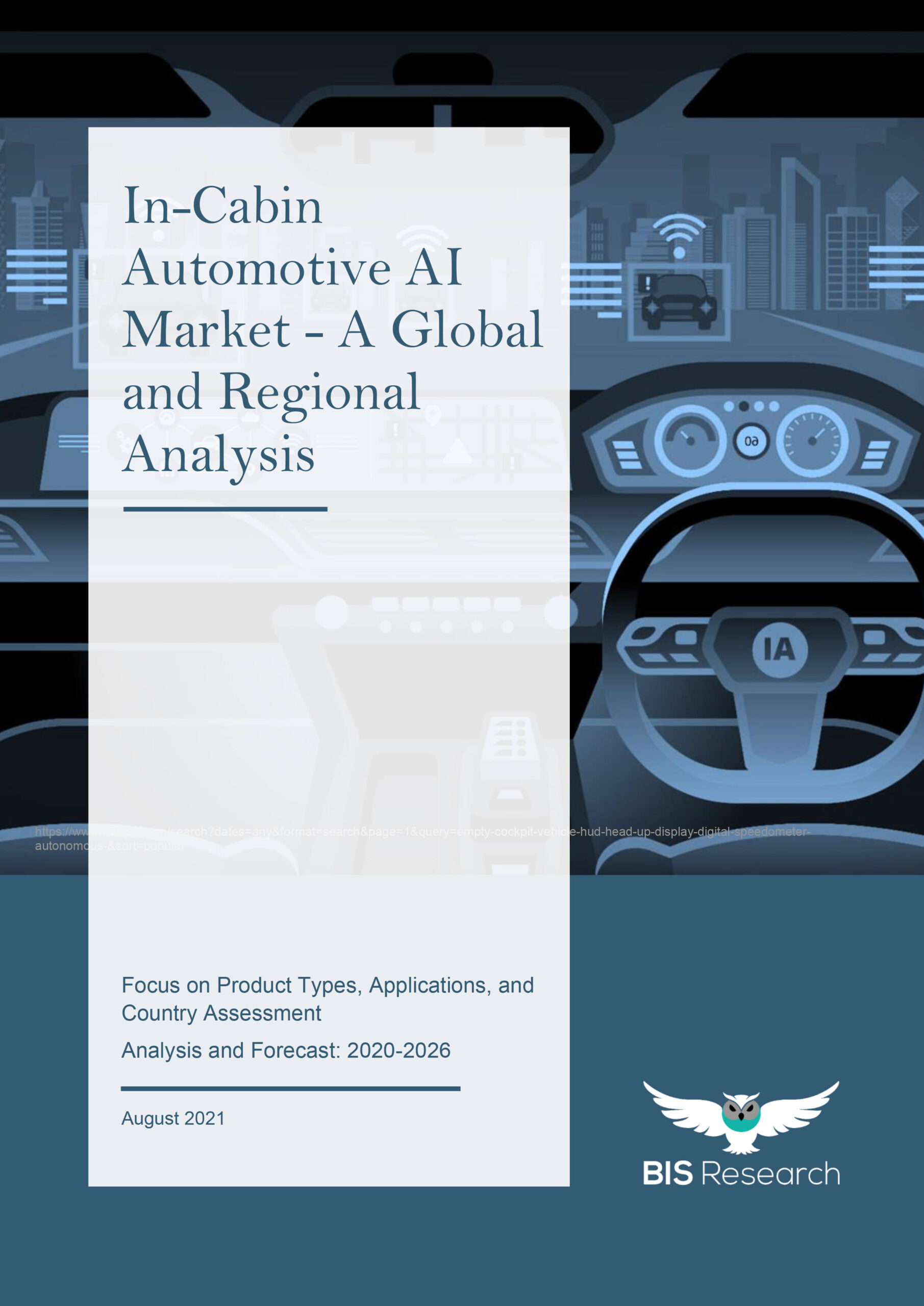Description
Market Report Coverage – In-Cabin Automotive AI
Market Segmentation
• Application: Driver Monitoring System, Occupant Monitoring System, Conversation Assistance, and Smart HVAC
• Product: Camera, Radar, Voice Assistant, and Smart Sensor
Regional Segmentation
• North America: U.S., Canada, and Mexico
• Europe: France, Germany, Spain, and Rest-of-Europe
• China
• U.K.
• Asia-Pacific and Japan: Japan, Australia, India, and Rest-of-Asia-Pacific and Japan
• Rest-of-the-World (RoW): South America, Middle East and Africa
Market Growth Drivers
• Rising Demand for the Autonomous Vehicle
• Increasing Concerns of Passenger and Pedestrian Safety Increase the Demand for In-Cabin Automotive AI
• Rising Demand for Customized Consumer Experience
Market Challenges
• Challenges Related to Infrastructure
• Design Challenges
Market Opportunities
• Increasing Demand for HVAC Systems in Cockpit
• Increasing Demand for Occupant Safety and Security
Key Companies Profiled
Visteon Corporation, Ambarella, Eyeris, Seeing Machines Limited, Eyesight Technologies (Cipia), Valeo, Faurecia, Robert Bosch GmbH, Hyundai Mobis, Denso Corporation, NXP Semiconductors N.V., ZF Friedrichshafen AG, Aptiv plc, QUALCOMM Incorporated, Renesas Electronics Corporation
How This Report Can Add Value
Product/Innovation Strategy: The product segment helps the readers in understanding the different types of in-cabin automotive AI components used in vehicles. Also, the study provides the readers with a detailed understanding of the in-cabin automotive AI market by application and product.
Growth/Marketing Strategy: In order to improve the capabilities of their product offerings, players in the global in-cabin automotive AI market are developing unique products. The readers will be able to comprehend the revenue-generating tactics used by players in the global in-cabin automotive AI market by looking at the growth/marketing strategies. Other market participants’ tactics, such as go-to-market plans, will also assist readers in making strategic judgments.
Key questions answered in the Report
• For a new company looking to enter the market, which areas could it focus upon to stay ahead of the competitor?
• How do the existing market players function to improve their market positioning?
• Which are the promising companies that have obtained financial support to develop their products and markets?
• How does the supply chain function in the in-cabin automotive AI market?
• Which product segment is expected to witness the maximum demand growth in the in-cabin automotive AI market during 2021-2026?
• What are the demand patterns of in-cabin automotive AI market across the application areas in different regions and countries during the forecast period 2021-2026?
In-Cabin Automotive AI Market
The in-cabin experience is usually referred to as the AI-powered cockpit, but it’s beyond the driver’s perspective. In-car experiences encompass the entire user experience, including the driver and passengers, with the goal of improving the overall comfort of the in-cabin experience. This includes the application of AI in intelligent driver assistance programs that improve safety or in infotainment systems that give instructions to the driver while providing content recommendations to passengers in the seat.
In-Cabin Automotive AI Industry Overview
The global in-cabin automotive AI market is expected to reach $503.2 million by 2026, with a CAGR of 45.41% during the forecast period 2021-2026. According to studies, customers make their first purchase of a particular car brand based mostly on outward look qualities, but the interior of the vehicle is what drives their likelihood of being a repetitive client.
One of the most successful drivers in promoting customer loyalty is in-cabin AI and the experience it enables. The automakers are engaging with or looking to engage with key ecosystem providers to give additional value to their customers. Improved driver experience and safety, as well as intelligent in-car assistance, are among some of the advantages offered by AI-powered cabins.
Market Segmentation
In-Cabin Automotive AI Market by Product
The global in-cabin automotive AI market has been segmented based on product including camera, radar, voice assistant, smart sensor. Among the various types of products, the camera holds the highest share as the monitoring systems contain a charge-coupled device (CCD) camera that can track the driver’s eye and is mounted on the steering column. In case of an emergency situation, the system alerts the driver with warning sounds and flashing lights. If the driver fails to react in a timely manner, the vehicle will automatically apply the brakes. A driver monitoring system (DMS) uses an infrared light-emitting diode (LED) and a camera to monitor the driver for signs of inattention or tiredness.
In-Cabin Automotive AI Market by Application
The global in-cabin automotive AI market has been segmented based on application driver monitoring system, occupant monitoring system, conversation assistance, smart HVAC. The driver monitoring system integrates the use of sensors, cameras, and other ‘intelligent’ equipment to provide aid, direction, and warning to the driver in a variety of crucial situations and emergencies. Moreover, the rising number of traffic accidents globally as a result of less driver alertness has become a serious area of concern for the governments.
In-Cabin Automotive AI Market by Region
The regions detailed in this report include North America, Europe, the U.K., China, Asia-Pacific and Japan, South America, and the Middle East and Africa. Europe holds the largest market share in the global in-cabin automotive AI market. The economic situation in Europe is favorable, and the consumers have a high disposable income, thereby leading to high demand for technologies such as in-cabin automotive AI. Image sensing/cameras, infrared sensing, and strain gauges are among the region’s signature technologies related to in-cabin automotive AI. Along with this, manufacturers are looking to improve their flexibility across the value chain, thereby driving the market toward the adoption of in-cabin automotive AI.
Key Market Players and Competition Synopsis
Visteon Corporation, Ambarella, Eyeris, Seeing Machines Limited, Eyesight Technologies (Cipia), Valeo, Faurecia, Robert Bosch GmbH, Hyundai Mobis, Denso Corporation, NXP Semiconductors N.V., ZF Friedrichshafen AG, Aptiv plc, QUALCOMM Incorporated, Renesas Electronics Corporation
The companies profiled in the report have been selected post undergoing in-depth interviews with experts and understanding details around companies such as product portfolios, annual revenues, market penetration, research and development initiatives, and domestic and international presence in the in-cabin automotive AI market.


